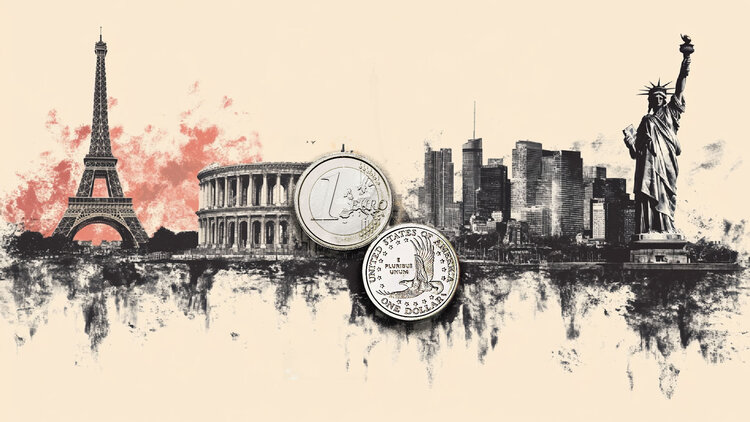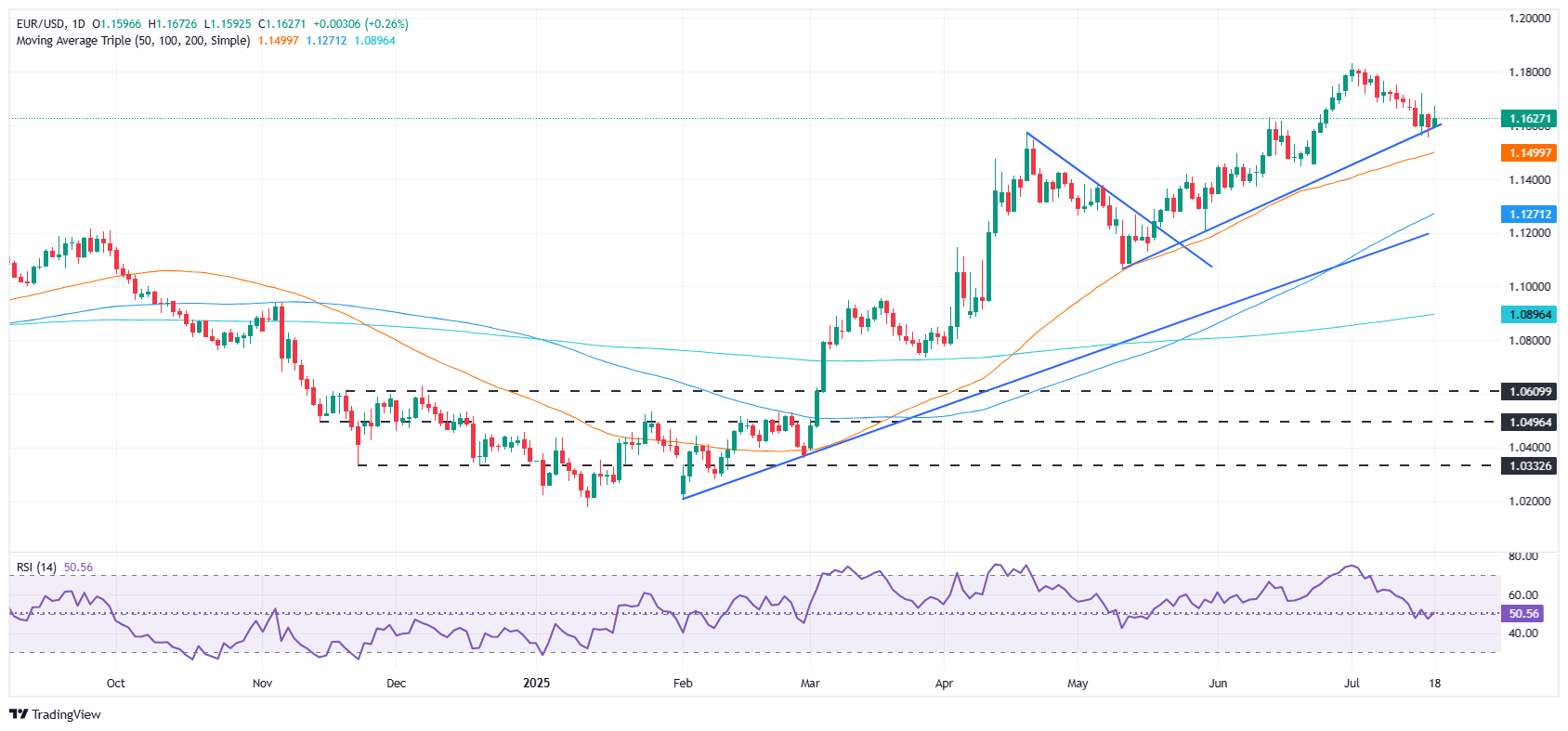
- Fed Governor Waller Signals Potential for July Rate Cut, Impacting Treasury Yields and the US Dollar.
- US Consumer Sentiment Improves, Inflation Expectations Decline, According to UoM Survey.
- Key Economic Events: ECB Policy Decision, EU and US Economic Indicators to Watch This Week.
The EUR/USD pair closed Friday’s trading session higher by over 0.26%, influenced by a softer US Dollar following dovish remarks from Fed Governor Christopher Waller. These comments led to lower US Treasury yields. However, an uptick in Consumer Sentiment somewhat limited the Euro’s advance, with the pair positioned at 1.1626 at the close.
Wall Street experienced a positive close as investors reacted favorably to Waller’s support for a rate cut in July. Nonetheless, a cautious tone from Chicago Fed President Austan Goolsbee, who adjusted his dovish outlook after the latest CPI report indicated initial tariff-related inflation pressures, tempered optimism.
On the data front, the University of Michigan’s Consumer Sentiment Index for July revealed increased optimism among households and a downward adjustment in inflation expectations. Meanwhile, housing market data also showed improvement. In contrast, the European economic calendar was light, with market participants eyeing potential trade developments between the EU and the US.
Looking ahead, the upcoming week in the EU will spotlight Consumer Confidence, preliminary PMIs for July, and the ECB’s monetary policy decision. In the US, the economic agenda will include updates on housing data, S&P Global Flash PMIs, Initial Jobless Claims, and Durable Goods Orders.
Daily Market Movers: EUR/USD Surpasses 1.1600 Despite Strong US Economic Data
- The University of Michigan’s preliminary Consumer Sentiment Index climbed to 61.8 in July, an increase from June’s 60.7 and slightly above the forecast of 61.5. Joanne Hsu, the director of the survey, noted that consumer confidence in the economy would likely hinge on stable trade policies and controlled inflation.
- The survey also indicated a reduction in inflation expectations, with the long-term outlook adjusted to 3.6% from 4%, and one-year expectations decreasing to 4.4% from 5%.
- Fed Governor Christopher Waller acknowledged the overall stability of the labor market but noted less robust conditions in the private sector. He expressed openness to a rate cut in July but emphasized the importance of considering all perspectives before the upcoming meeting.
- Chicago Fed President Austan Goolsbee commented that recent tariffs complicate the fight against inflation, suggesting a cautious approach to any immediate policy adjustments despite a general preference for rate cuts.
- Recent US economic reports present a mixed view on inflation, with CPI nearing 3% and PPI showing signs of moderation. However, unexpectedly strong Retail Sales data suggested that price increases, partly due to new tariffs, were a significant factor driving the figures.
- Several ECB officials have recently shared their perspectives on monetary policy, with figures like Mario Centeno and Fabio Panetta indicating a possible pause or cut in rates due to growing economic risks.
- Conversely, Isabel Schnabel and Robert Holzmann advocated for maintaining current rates, calling for more data before any policy adjustments.
EUR/USD Technical Analysis: Trading Sideways Between Key SMAs
The EUR/USD pair is exhibiting a sideways trading pattern, with an upward bias from a structural standpoint. However, the Relative Strength Index (RSI) suggests a neutral stance, indicating no clear dominance by either buyers or sellers.
Should EUR/USD breach the 1.1650 level, it would pave the way to test the 20-day SMA at 1.1692. Success in surpassing this could lead to further targets at 1.1700 and 1.1800.
Conversely, a drop below 1.1600 could see the pair approaching the support at 1.1550, followed by the 50-day SMA at 1.1497. If these support zones are broken, the next significant level for bulls would be the 100-day SMA at 1.1266.








Leave a Comment